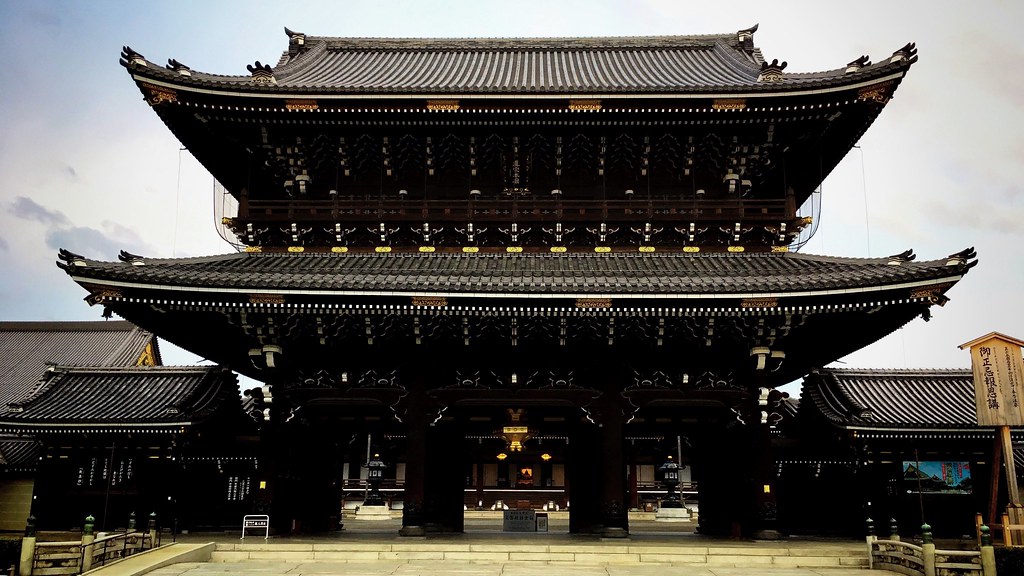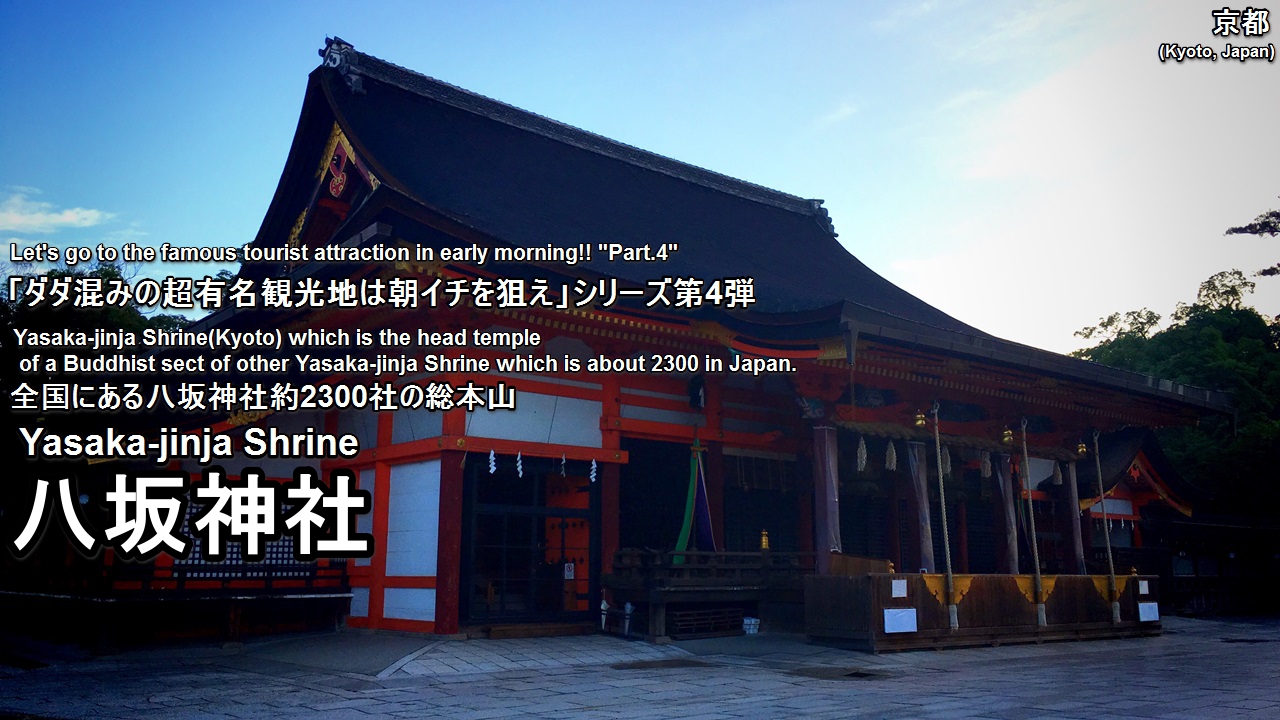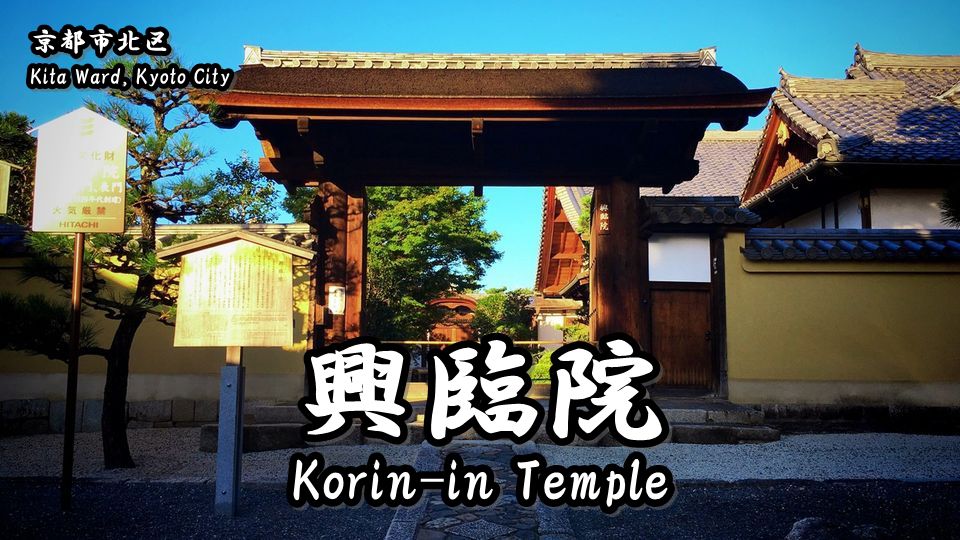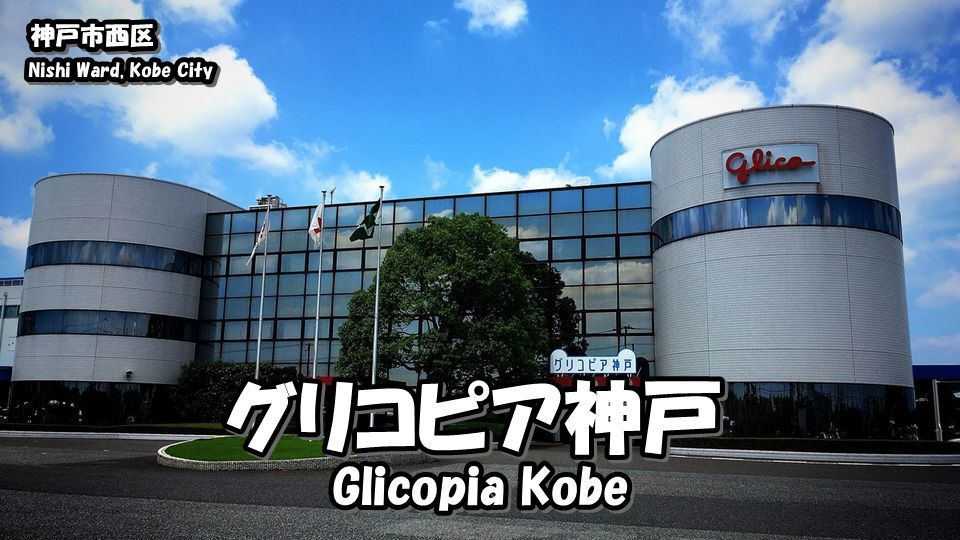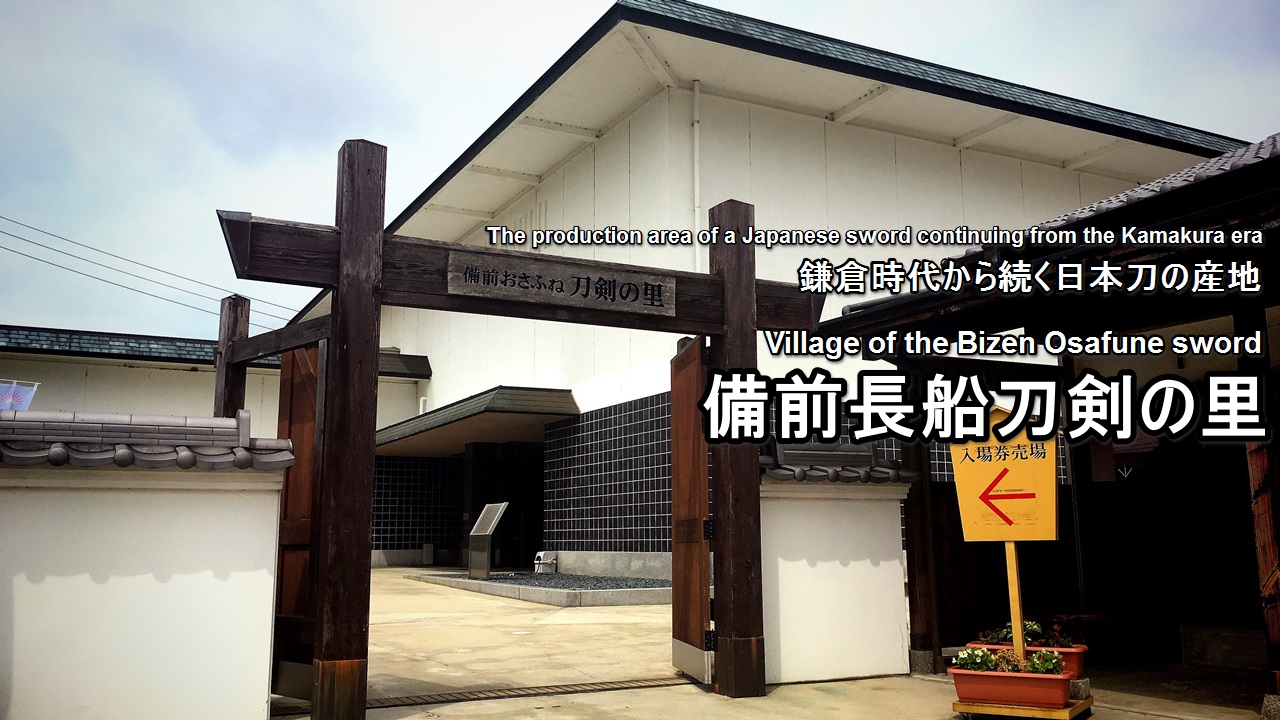Higashi Hongan-ji temple is a head temple of the Shinshu Otani-ha branch of Jodo Shinshu located in Shimogyo-ku Ward, Kyoto City, Kyoto Prefecture.
The formal name of this temple is Shinshu Honbyo (commonly called Higashi Hongan-ji).
Now, the Jodo Shinshu Sect of Buddhism has two big sects of the ‘Hongan-ji branch of Jodo Shinshu‘ and the ‘Otani branch of Jodo Shinshu‘.
Therefore two big temples of ‘Nishi Hongan-ji Temple’ and ‘Higashi Hongan-ji Temple’ are in Kyoto now.
The best highlight of this temple is Goei-do hall (hall dedicated to the sect’s founder).
The Goei-do Hall is generally introduced as ‘one of the largest architectural wooden structures in the world.’
In addition, this temple has been designated as the Michelin green guide ★.
So, I went to Higashi Hongan-ji Temple this time.
Contents:
- Why was the Hongan-ji Temple split into two temples?
- About Higashi Hongan-ji Temple
- Visitor Information
- The highlights of Higashi Hongan-ji Temple
- The photos of Higashi Hongan-ji Temple
- The Goshuin (the stamp of shrine or temple) of Higashi Hongan-ji Temple
- How to get to the Higashi Hongan-ji Temple
1.Why was the Hongan-ji Temple split into two temples?
Let’s study the Japanese history with me before introducing Higashi Hongan-ji Temple.
I think that we can enjoy the sightseeing of Hongan-ji Temple still more by learning the history of these temples.
Once upon a time in Japan…
Originally, the Nishi Hongan-ji Temple and the Higashi Hongan-ji Temple were one big temple of the Jodo Shinshu Sect of Buddhism.
In the Sengoku period, Hongan-ji was one of the major force in Japan.
So, they had resistance movement which was called ‘Ikko ikki‘ to resist Sengoku daimyo(feudal lord) in each place of Japan.
(From that time, the Hongan-ji Temple was also called ‘Ikko-Shu(Ikko Sect)‘.)
The Hongan-ji religious group of this period was an armed battle group to Sengoku daimyo definitely.
Particularly, the conflict between Hongan-ji Temple and the Oda clan, which began in 1570 and lasted over ten years as the so-called ‘Ishiyama Gassen(War)‘, burdened Nobunaga ODA heavily, since Hongan-ji Temple had gained the upper hand through the coalition between Kennyo and others who had entrenched themselves in the fortified Ishiyama Honganji Temple, and Hongan-ji Temple followers who carried on a resistance movement against the Oda clan in various regions.
But, finally, because Nobunaga ODA destroyed Ishiyama Honganji Temple which was the head temple of Hongan-ji religious group in 1580, the Hongan-ji’s power became weak.
By the way, it is also said that the series of Ikko Ikki is one of the reason that Nobunaga Oda was not able to unify Japan.
Later years (in the Edo period), it is said that Ieyasu TOKUGAWA, who had suffered from an uprising of Ikko sect followers in Mikawa in his youth, enticed Kyonyo who was a suzerain of Hongan-ji to separate Hongan-ji Temple to make the power of Hongan-ji Temple more diminish. (But there are different and various theories.)
Herewith, Hongan-ji Temple split into Nishi Hongan-ji Temple of which the twelfth monshu was Junnyo, the third son of Kennyo, (the present Hongan-ji branch of Jodo Shinshu) and Higashi Hongan-ji Temple of which the twelfth monshu was Kyonyo, the eldest son of Kennyo (the present Otani branch of Jodo Shinshu).
Then after the separation of Hongan-ji Temple, Higashi-Hongan-ji Temple and Nishii-Hongan-ji Temple came to confront each other, and resultantly, the sect gradually lost the strong armed religious power that had been threatened daimyo in the Sengoku period.
And, that situation is ongoing…
2.About Higashi Hongan-ji Temple
Higashi Honganji (東本願寺 Higashi Hongan-ji), or, the Eastern Temple of the Original Vow, is one of two dominant sub-sects of Shin Buddhism in Japan and abroad, the other being Nishi Honganji (or, ‘The Western Temple of the Original Vow’). It is also the name of the head temple in Kyoto, a collection of buildings built in 1895 after a fire burned down the previous temple. As with many sites in Kyoto, these two complexes have more casual names and are known affectionately in Kyoto as Onissan (お西さん, Honorable Mr. West) and Ohigashisan (お東さん, Honorable Mr. East).
引用(citation):https://en.wikipedia.org/wiki/Higashi_Honganji
Open:5:50-17:30(March – October), 6:20-16:30(November – February)
Admission Fee:Free
Address:Karasuma Shichi-jō Agaru, Shimogyō-ku, Kyoto 600-8505, Japan
Phone Number:+81-075‐371‐9181
Foundation:1602
Founder:Kyonyo
Sect:Shinshu Otani-ha branch of Jodo Shinshu
Principal image:Amida Nyorai (Amitabha Tathagata)
Higashi Hongan-ji temple is a head temple of the Shinshu Otani-ha branch of Jodo Shinshu located in Shimogyo-ku Ward, Kyoto City, Kyoto Prefecture.
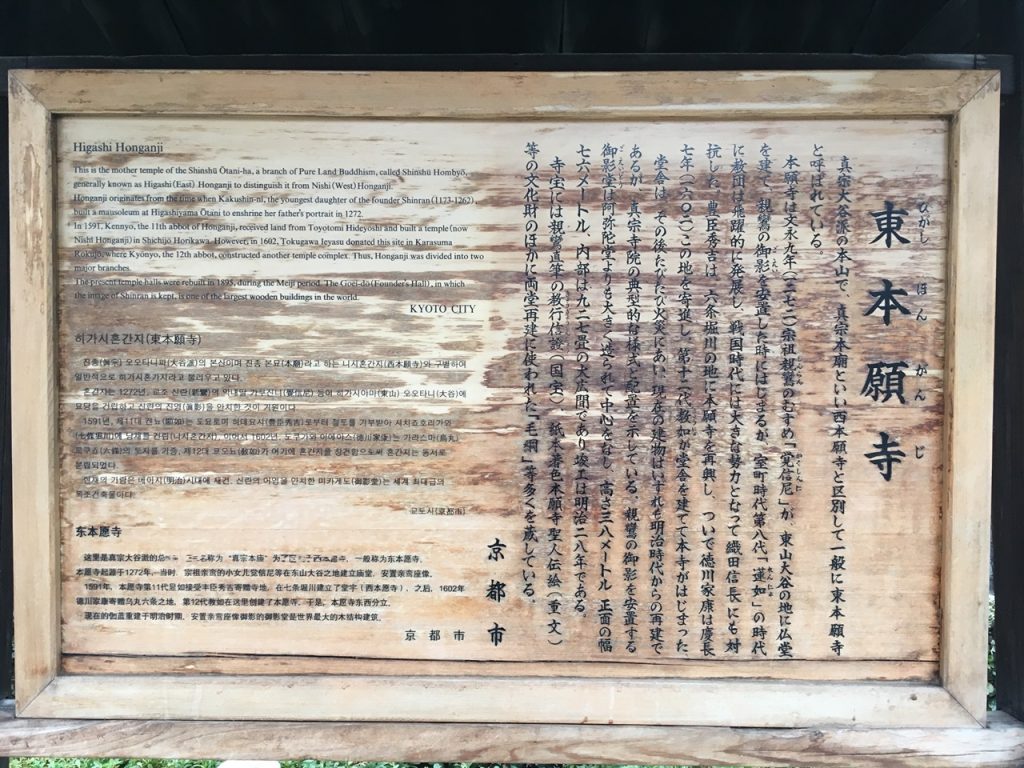
The formal name of this temple is Shinshu Honbyo (commonly called Higashi Hongan-ji).

There is the Goei-do Hall which is the largest architectural wooden structures in the world in the precincts of this temple.

The area of the Dai-Shinden hall is closed now. (As of January, 2017)
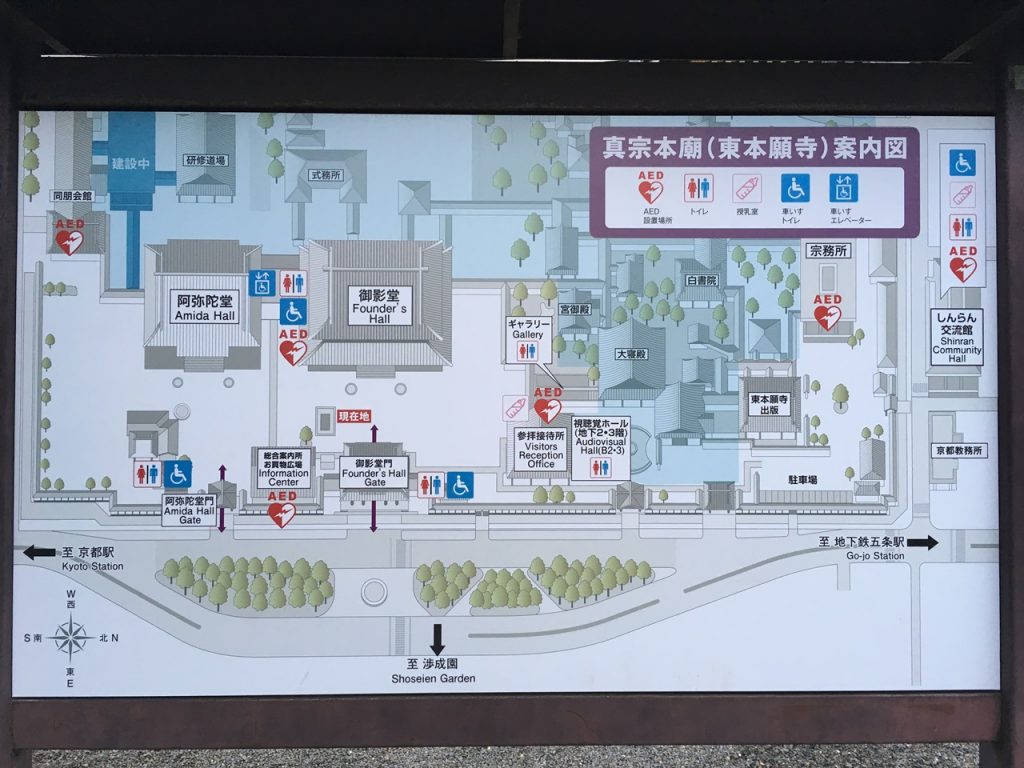
There is the Nishi Hongan-ji Temple which is the head temple of the Hongan-ji branch of Jodo Shinshu on the west side of the Higashi Hongan-ji Temple.
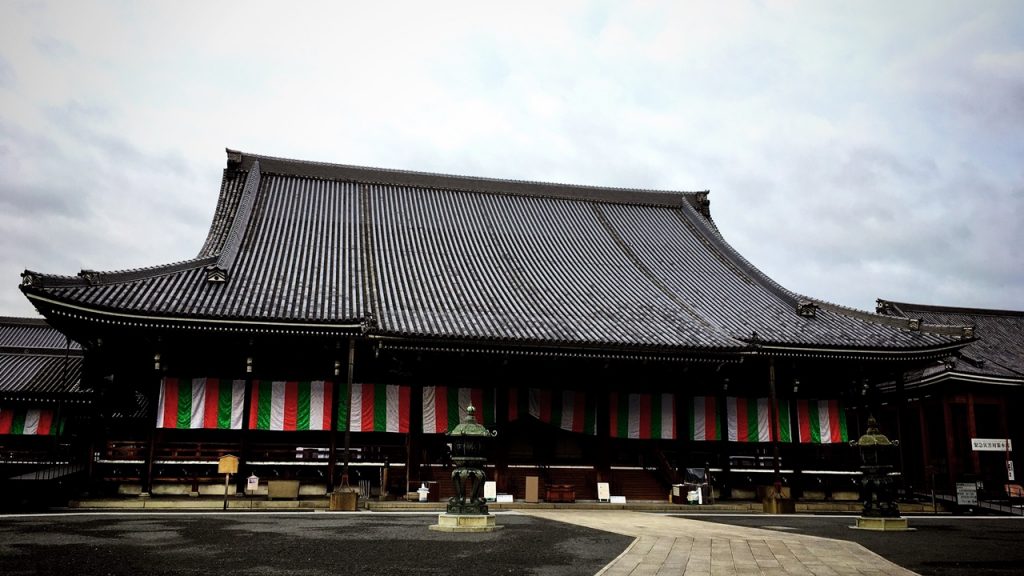
This temple is often referred to a ‘Higashi Hongan-ji Temple’ or ‘Ohigashi-san’ in order to differentiate it from Nishi Hongan-ji Temple (officially named Ryukokuzan Hongan-ji Temple) which is also situated in Kyoto’s Shimogyo-ku Ward.
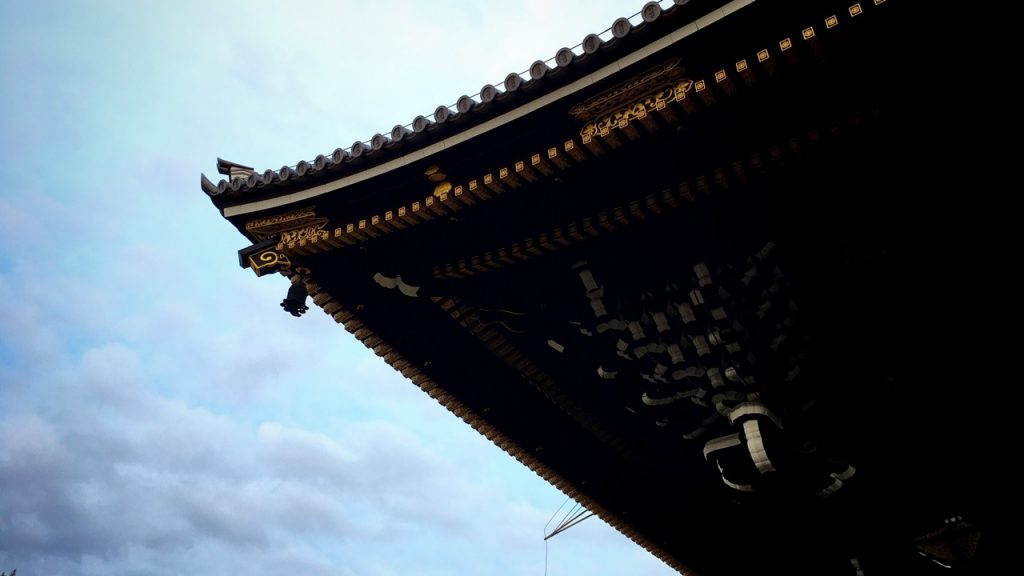
Shosei-en Garden, on the neighboring grounds, is a national scenic area.
(This garden is a detached landholding in Shimogyo-ku Ward, Kyoto City, Kyoto Prefecture that belongs to Shinshu Honbyo (Higashi Hongan-ji Temple).)
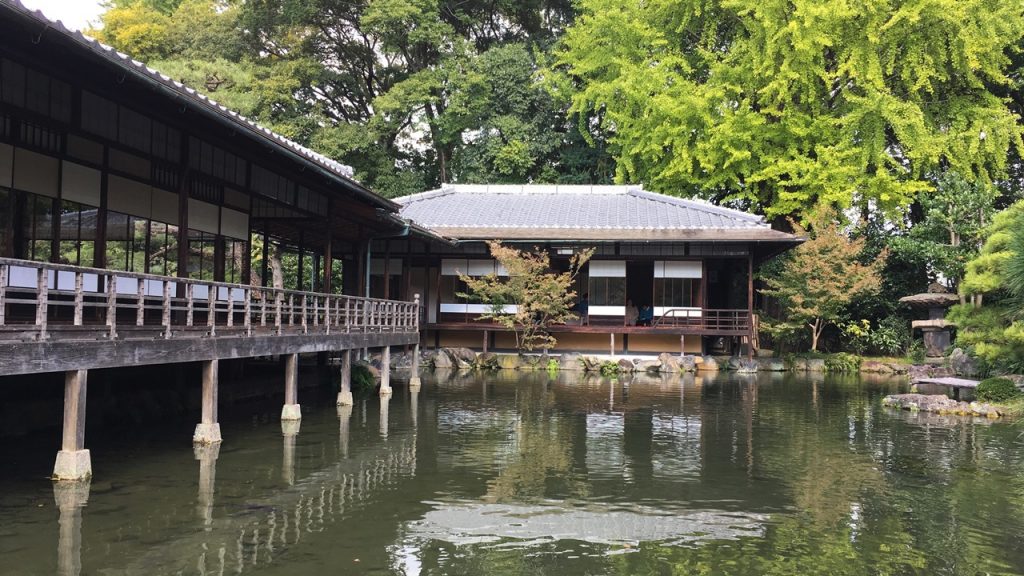
In Otani Mausoleum which is the grave which Higashi Hongan-ji Temple manages, on the nights of Obon festival (a Festival of the Dead or Buddhist All Soul’s Day) (August 14-16) every year, the ‘Higashi Otani Mantoe Festival’ is held.
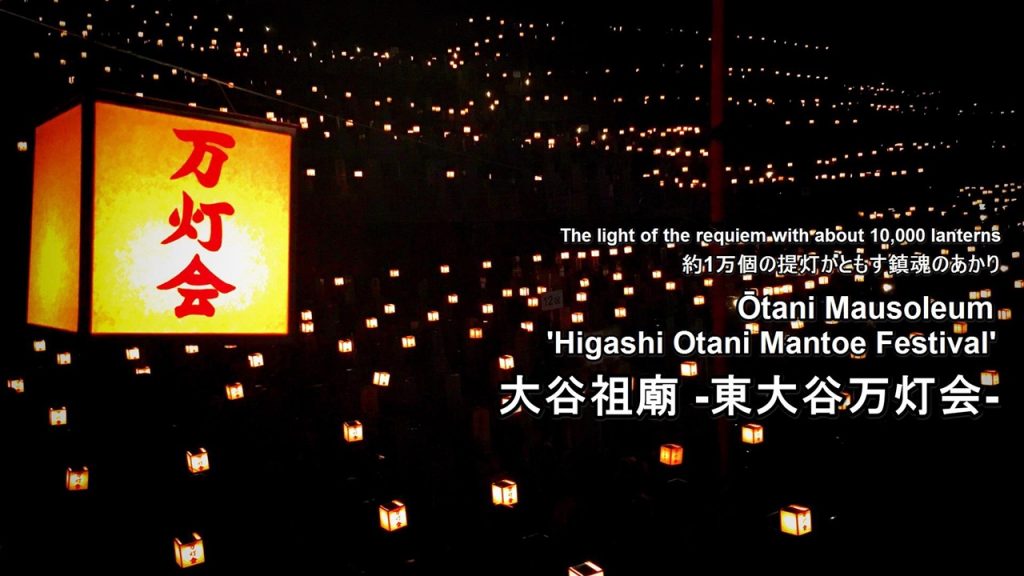
3.Visitor Information
・The area of the Dai-Shinden hall is closed now. (As of January, 2017)
・Photography and video recording are prohibited inside the building of this temple.
Let’s follow a rule.
4.The highlights of Higashi Hongan-ji Temple
- 御影堂門(登録有形文化財):Goeido-mon gate(Registered Tangible Cultural Properties)
- 阿弥陀堂門(登録有形文化財):Amidado-mon gate(Registered Tangible Cultural Properties)
- 御影堂(登録有形文化財):Goei-do hall(Registered Tangible Cultural Properties)
- 阿弥陀堂(登録有形文化財):Amida-do hall(Registered Tangible Cultural Properties)
- 高廊下:Taka-Roka(High corridor)
- 鐘楼(登録有形文化財):Shoro (bell tower)(Registered Tangible Cultural Properties)
- 手水舎:Chozuya
- 菊の門(登録有形文化財):Chrysanthemum gate(Registered Tangible Cultural Properties)
- 玄関門(登録有形文化財):Genkan-mon gate(Registered Tangible Cultural Properties)
- 築地塀(登録有形文化財):Tsuijibei (Roofed mud-wall)(Registered Tangible Cultural Properties)
Because this temple had 4 great fires in the Edo period, it acquired the nickname, “Flaming Hongan-ji Temple”.
For that reason, the current buildings, many burned and were rebuilt in the Meiji period.
●御影堂門(登録有形文化財):Goeido-mon gate(Registered Tangible Cultural Properties)
This is the Goeido-mon gate rebuilt in 1911 of the Meiji period which is designated as a Registered Tangible Cultural Properties.
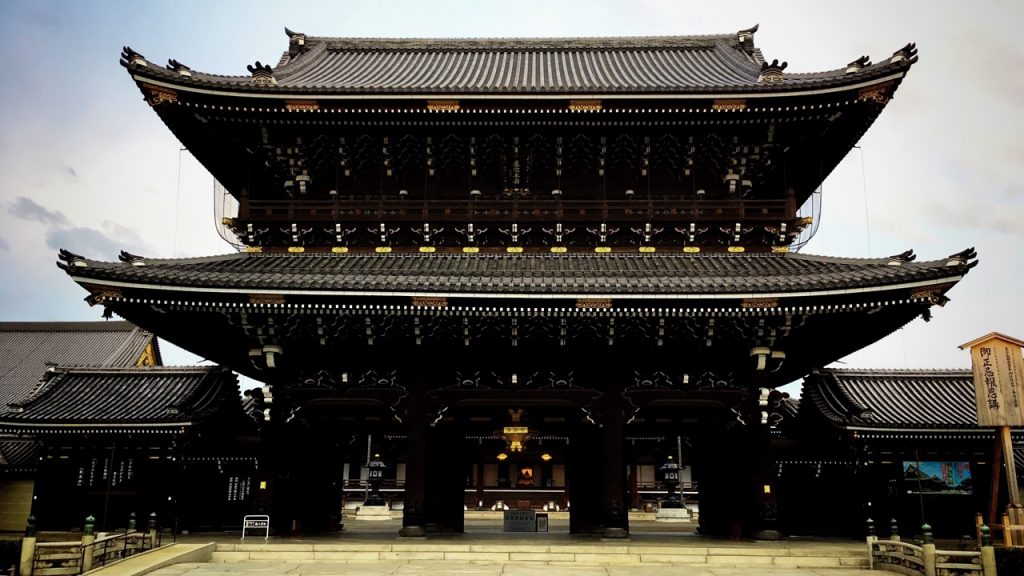
It is considered one of the three great gates of Kyoto along with the Sam-mon Gate of Chion-in Temple and the Sam-mon Gate of Nanzen-ji Temple.
The roof of this gate is formal tile-roofing.
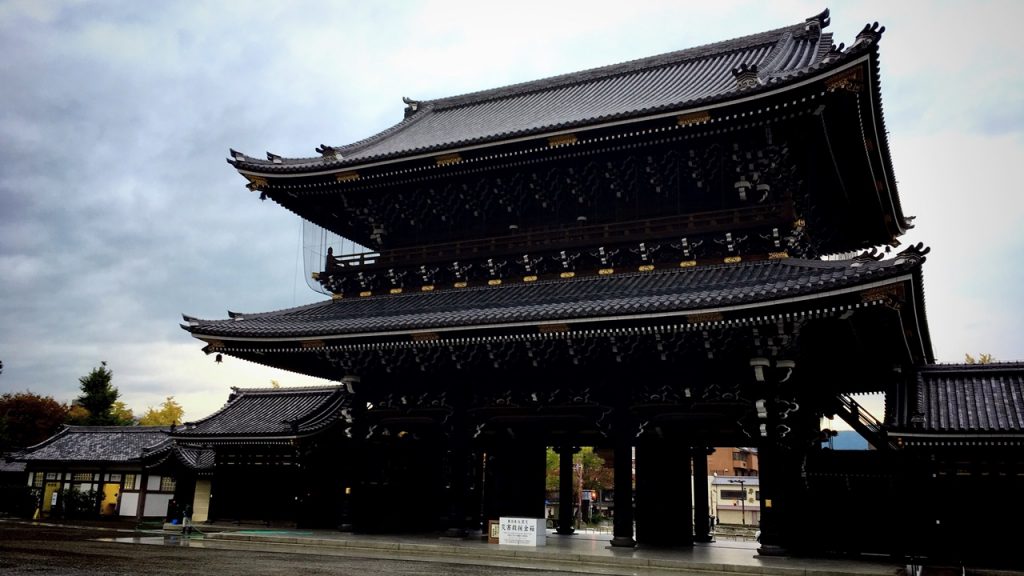
●阿弥陀堂門(登録有形文化財):Amidado-mon gate(Registered Tangible Cultural Properties)
This is the Amidado-mon gate rebuilt in 1911 of the Meiji period which is designated as a Registered Tangible Cultural Properties.

The roof of this gate is Hiwadabuki (roofs with the bark of hinoki, Japanese cypress).
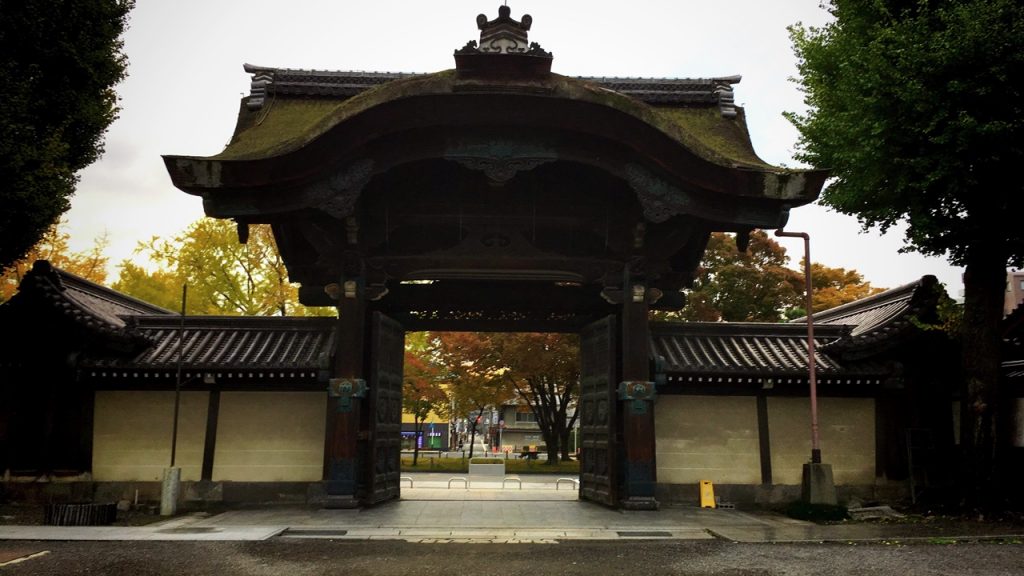
●御影堂(登録有形文化財):Goei-do hall(Registered Tangible Cultural Properties)
This is the Goei-do hall rebuilt in 1895 of the Meiji period which is designated as a Registered Tangible Cultural Properties.
Shinran who was a sect founder of the Jodo Shinshu Sect is enshrined in this building.
The Goei-do Hall is generally introduced as ‘one of the largest architectural wooden structures in the world.’
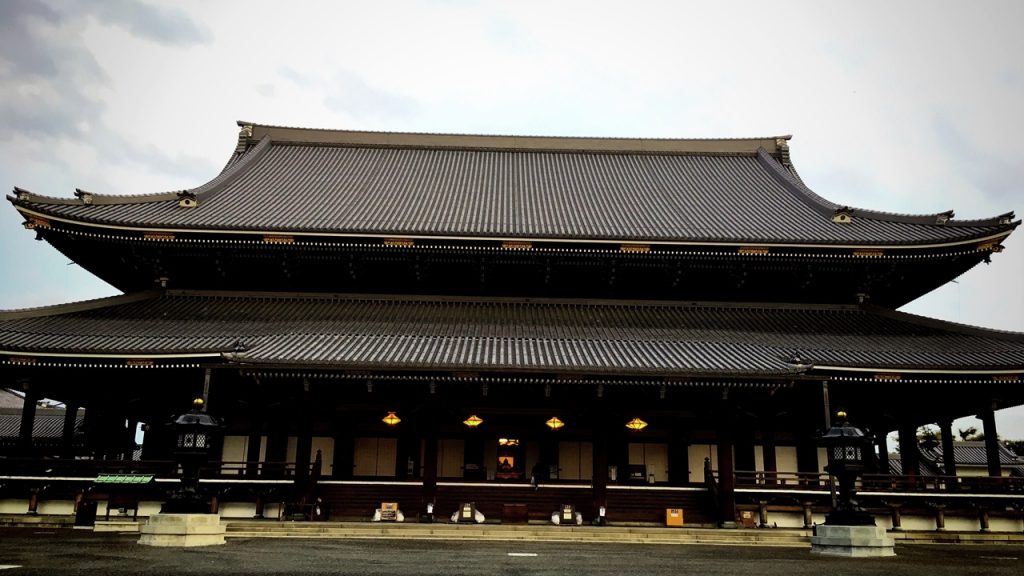
The total cost of construction of this building took approximately 9, 800 million yen and it took about 15 years for built.

●阿弥陀堂(登録有形文化財):Amida-do hall(Registered Tangible Cultural Properties)
This is the Amida-do hall rebuilt in 1895 of the Meiji period which is designated as a Registered Tangible Cultural Properties.
This building is the main hall of this temple, and Amida Nyorai (Amitabha Tathagata) which is the principal idol is enshrined in the building.
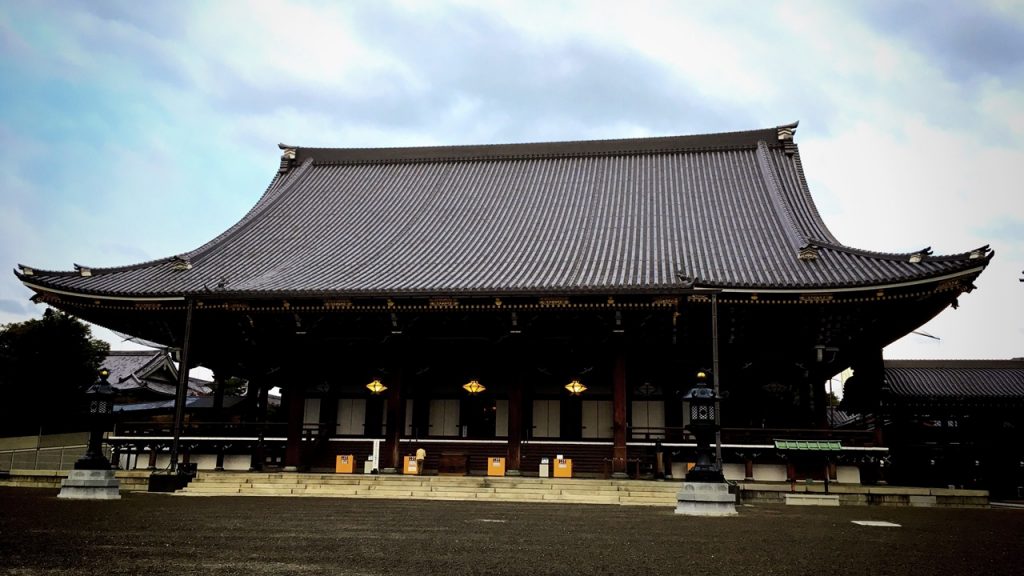
This building is smaller than the Goei-do hall, but still is very big.
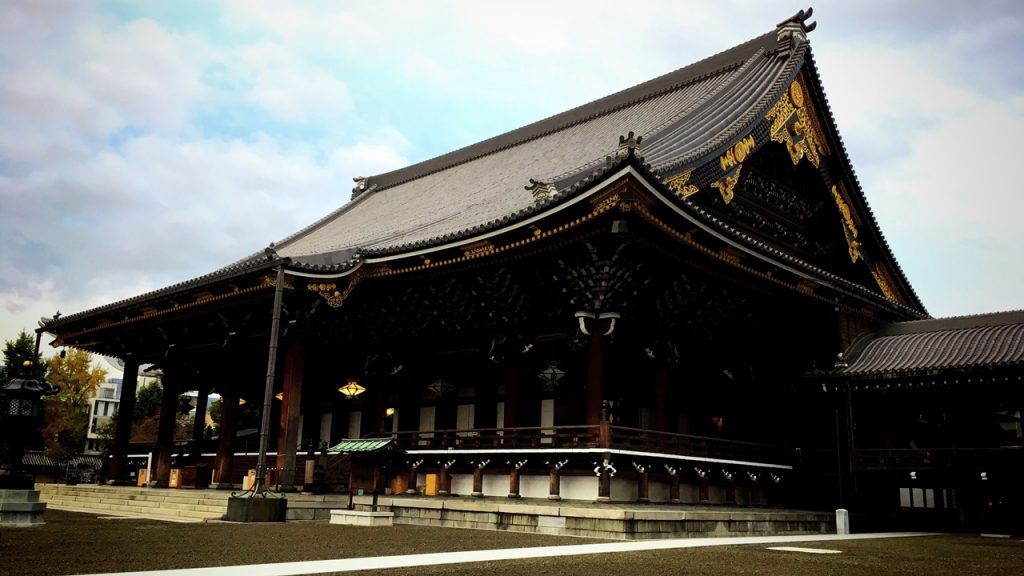
●高廊下:Taka-Roka(High corridor)
Each hall is connected by the 2-story corridor called Taka-Roka (High corridor).
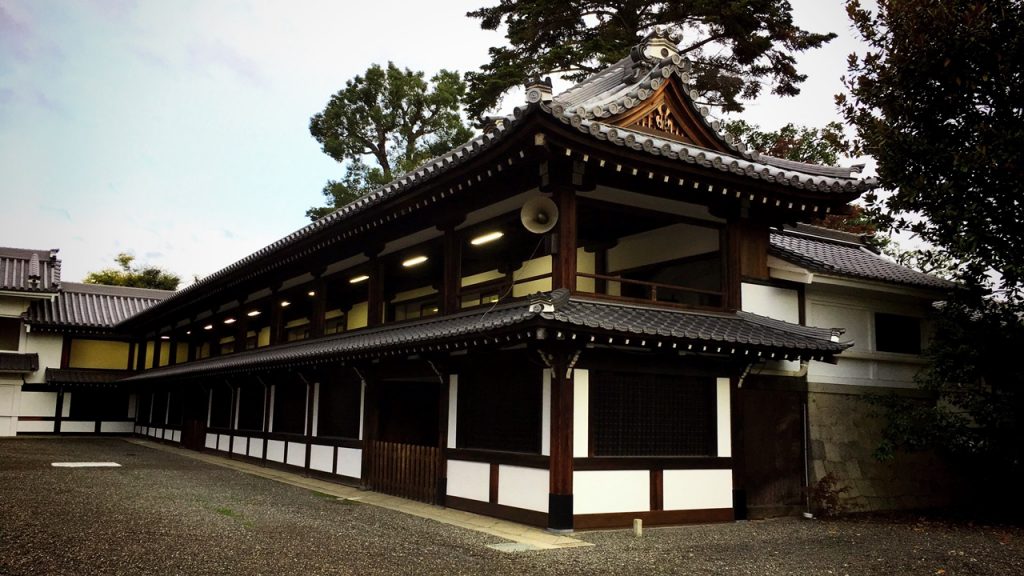
●鐘楼(登録有形文化財):Shoro (bell tower)(Registered Tangible Cultural Properties)
This is the Shoro (bell tower) rebuilt in 1894 of the Meiji period which is designated as a Registered Tangible Cultural Properties.
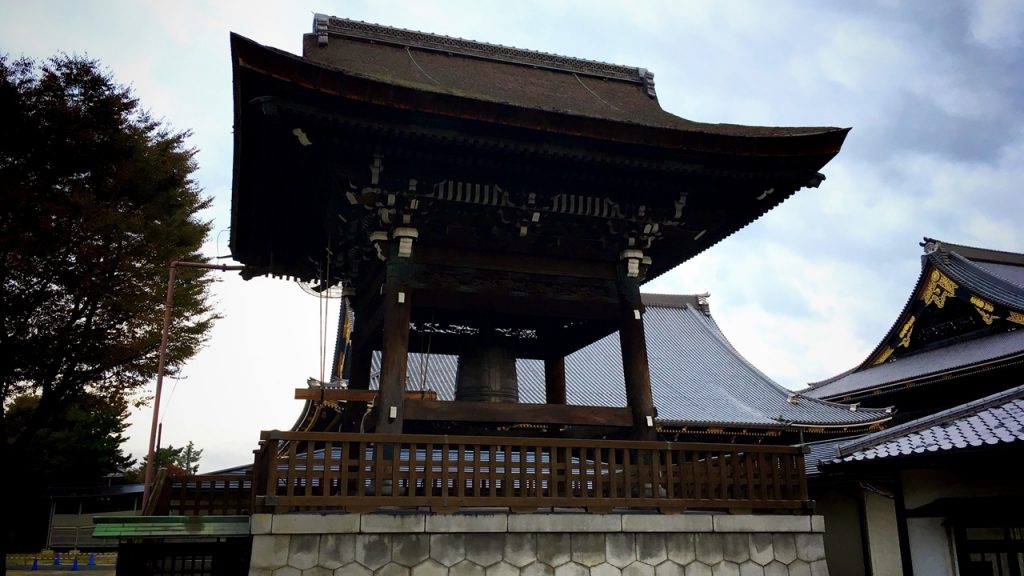
The temple bell hung by this bell tower was cast in 1604 of the Edo era.
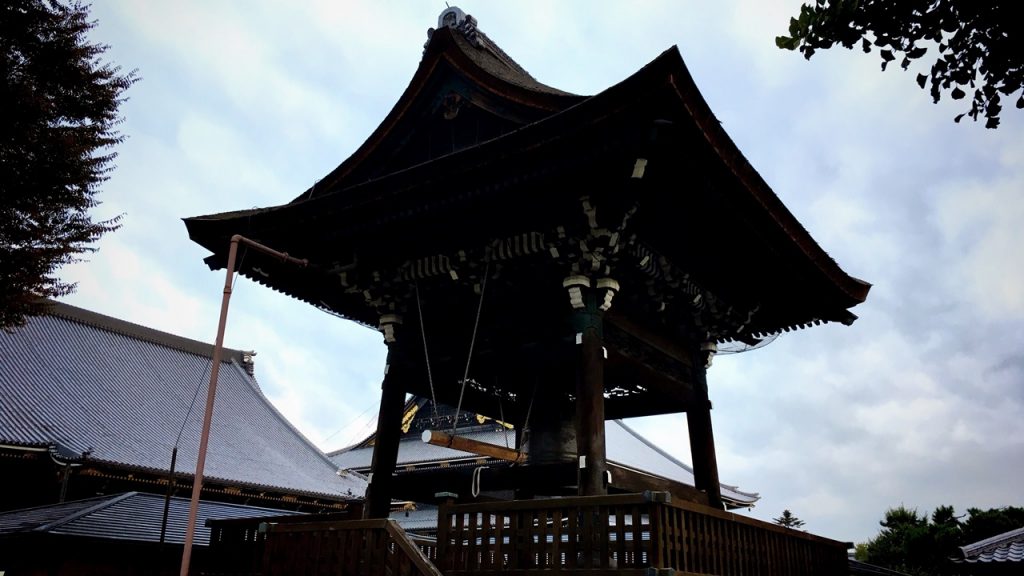
●手水舎:Chozuya
This is the Chozuya.
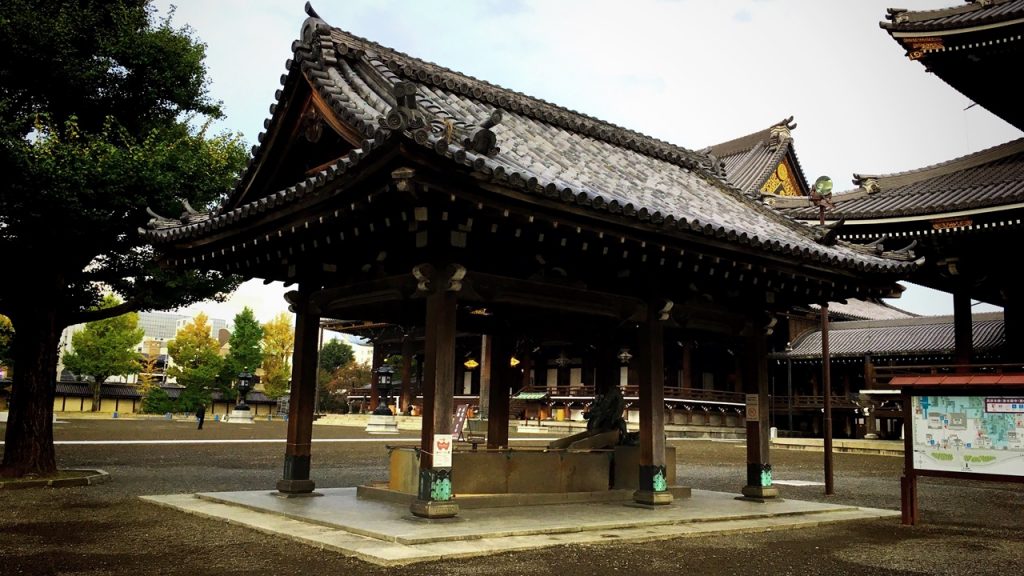
Because the dragon is a symbol of God of the water in Japan, the sculpture of the dragon is often put in the Chozuya.

●菊の門(登録有形文化財):Chrysanthemum gate(Registered Tangible Cultural Properties)
This is the Kikuno-mon(Chrysanthemum gate) built in 1911 of the Meiji period which is designated as a Registered Tangible Cultural Properties.
Because this gate has a role as the Chokushi-mon gate, the Imperial Crest of the Chrysanthemum that is a crest of the Imperial Family is decorated in this gate.
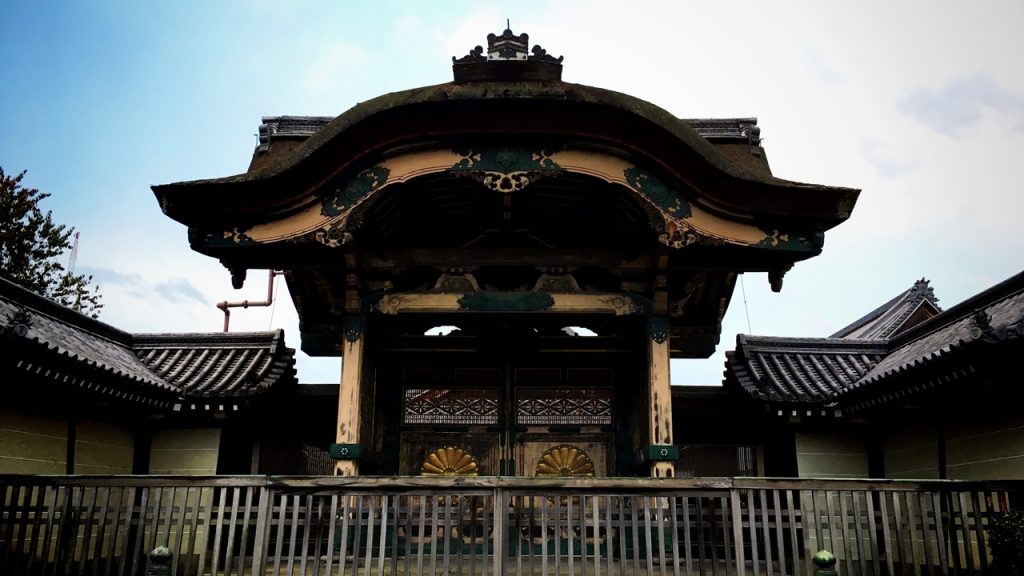
●玄関門(登録有形文化財):Genkan-mon gate(Registered Tangible Cultural Properties)
This is the Genkan-mon gate built in 1911 of the Meiji period which is designated as a Registered Tangible Cultural Properties.
This gate has the role of the entrance of the Dai-Shinden hall.
However, this gate is always closed because the Dai-Shinden hall is not open to the general public.

●築地塀(登録有形文化財):Tsuijibei (Roofed mud-wall)(Registered Tangible Cultural Properties)
This is the Tsuijibei (Roofed mud-wall) built in the Meiji period which is designated as a Registered Tangible Cultural Properties.
These walls are surrounding this temple. The white lines called Jogi-suji are drawn on this wall.
This white line expresses the grade of a Buddhist temple. Five white lines are the best grade.
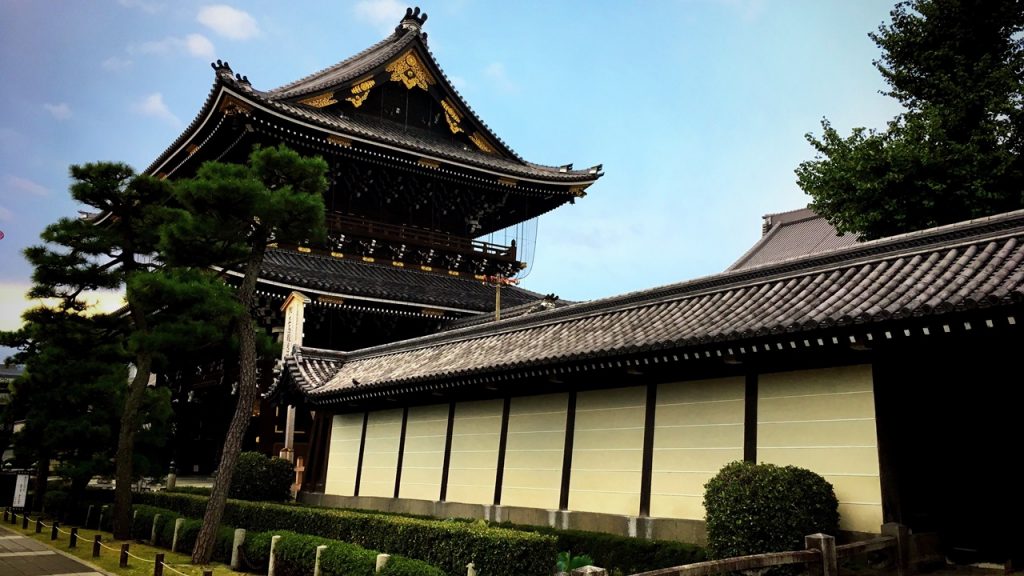
5.The photos of Higashi Hongan-ji Temple
■Flickr:Photo of Higashi Hongan-ji Temple (20161109)
6.The Goshuin (the stamp of shrine or temple) of Higashi Hongan-ji Temple
The Hongan-ji Temple does not have a goshuin.
But instead, we can get a commemorative seal at the reception desk.
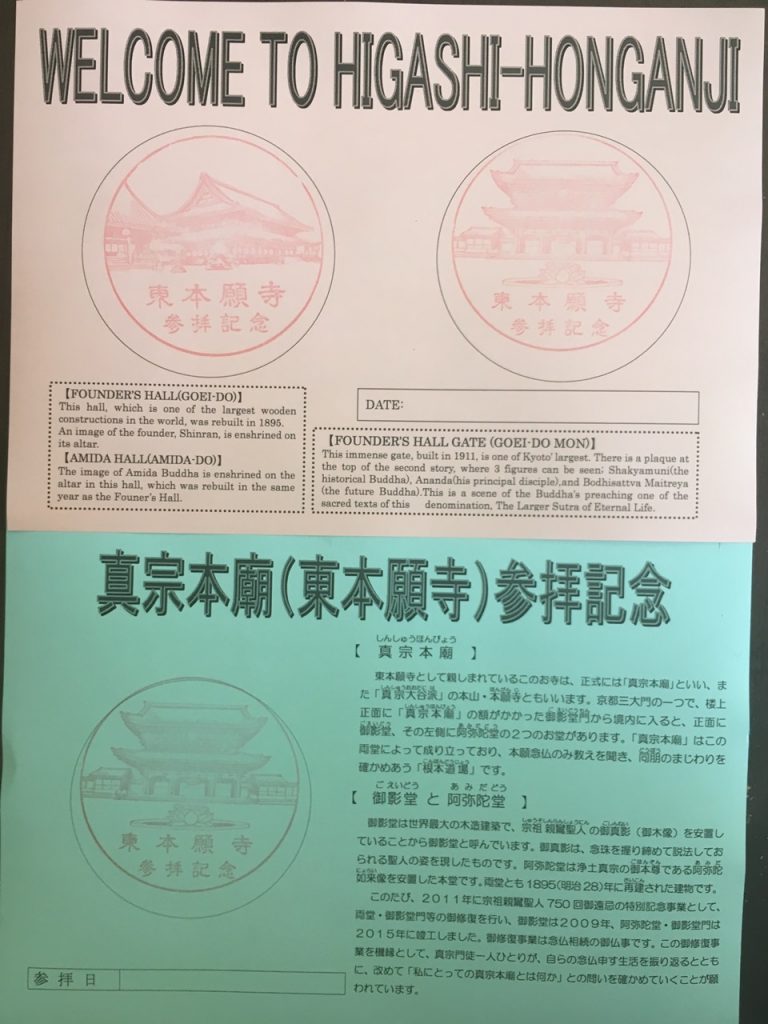
7.How to get to the Higashi Hongan-ji Temple
The nearest station of the Higashi Hongan-ji Temple is “JR Kyoto station” or “Kyoto City Subway Gojo Station”
(We can also go by bus from “Hankyu Kawaramachi Station”, “Keihan Sanjo Station”.)
■Route Example (From Osaka station to Kyoto Station)

■Route Example (From Namba station to Kyoto Station)
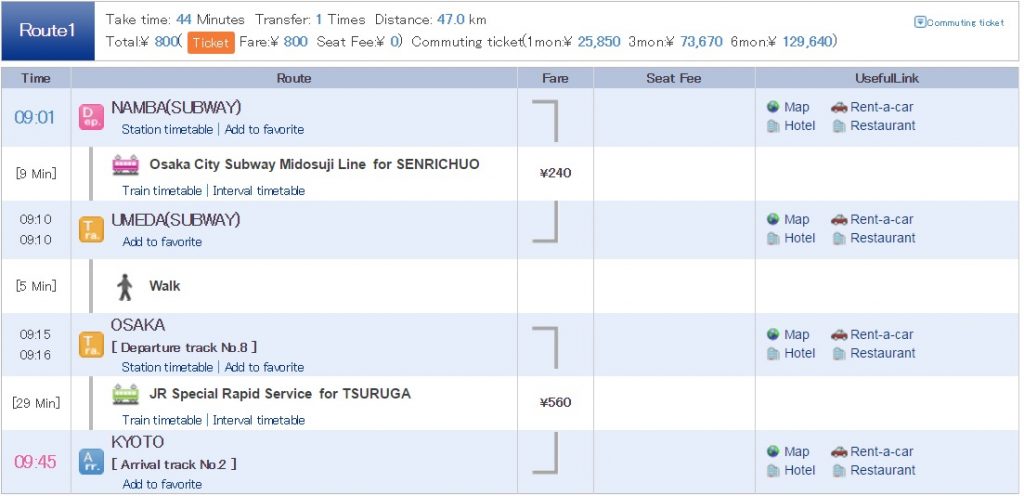
■Kyoto Station→Higashi Hongan-ji Temple
We go on foot from JR Kyoto Station to Higashi Hongan-ji Temple.
It’s about 10 minutes (500m) on foot.
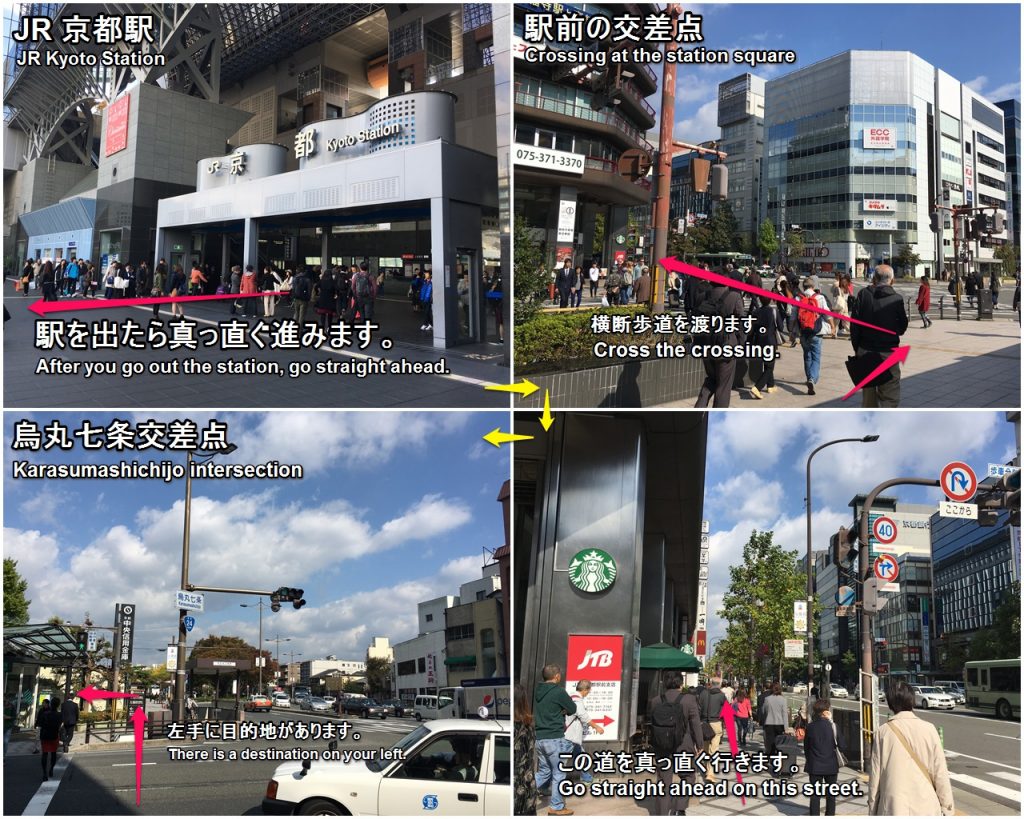
■Subway Gojo Station→Higashi Hongan-ji Temple
We go on foot from Subway Gojo Station to Higashi Hongan-ji Temple.
It’s about 7 minutes (400m) on foot.
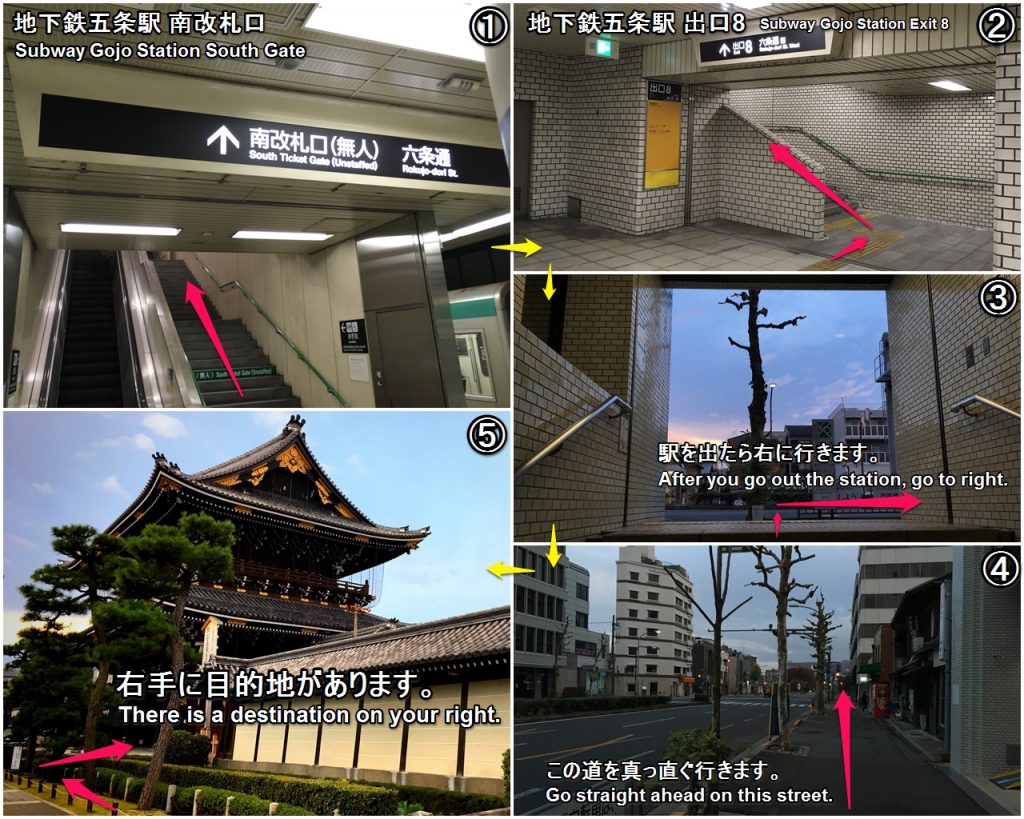
■When you get on a bus from Hankyu Kawaramachi Station
Timetable and Route Search of bus
[Timetable]Route No.5
Bus company:Kyoto City Bus
Routes/Destination:No.5[Bound for Kyoto Sta.]
Boarding bus stop:Shijo Kawaramachi[A]
Alighting bus stop:Karasuma Nanajo
Bus fare:230 yen
Time required:About 11 min
■When you get on a bus from Keihan Sanjo Station
Timetable and Route Search of bus
[Timetable]Route No.5
Bus company:Kyoto City Bus
Routes/Destination:No.5[Bound for Kyoto Sta.]
Boarding bus stop:Sanjo Keihan-mae[C3]
Alighting bus stop:Karasuma Nanajo
Bus fare:230 yen
Time required:About 16 min
■When you take a taxi
Let’s show a taxi driver the following phrase.
From Kyoto Station:About 3 minutes / 620 yen (You’d better go on foot.)
From Gion-Shijo Station:About 15 minutes / 1,260 yen
How did you like it?
Please try to go to this temple.
Have a nice trip! ( *´艸`)
<Let’s search the sightseeing information of Kansai in Japan on ‘Japan’s Travel Manual‘!!>
<This site introduces the easiest way to get Japanese (Kansai) sightseeing spots to you.>


